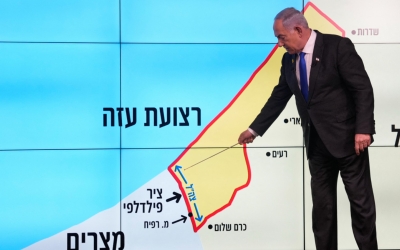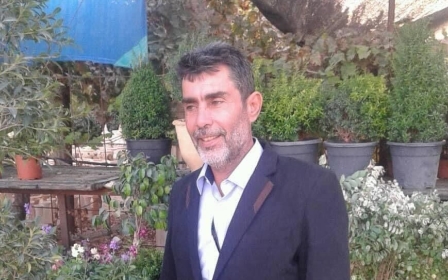US sets two-week deadline for Gaza ceasefire talks, Turkish official says

A Turkish foreign ministry spokesperson said the United States has been misleading the public by claiming that Gaza ceasefire negotiations have been progressing positively, citing Hamas officials.
The spokesperson noted that although the US has a genuine interest in reaching a deal to end Israel's war on Gaza due to the upcoming elections, Washington isn't exerting any real pressure on Israel.
“The US has told [Hamas] that they would continue the current talks for two more weeks and then end them if there is no resolution,” the spokesperson said, citing a Hamas official personally involved in the negotiations.
“This stance is extremely dangerous because it means we will be back at square one.”
The spokesperson, who spoke on condition of anonymity due to diplomatic protocol, said that despite US attempts to depict the talks as optimistic, Israeli Prime Minister Benjamin Netanyahu has been making new demands during each round of the ceasefire talks.
New MEE newsletter: Jerusalem Dispatch
Sign up to get the latest insights and analysis on Israel-Palestine, alongside Turkey Unpacked and other MEE newsletters
The negotiations currently focus on the status of the Philadelphi corridor, a buffer zone along the Gaza Strip's border with Egypt, as well as the Rafah border crossing and the exchange of Israeli captives for Palestinian prisoners.
Netanyahu “refuses to leave the Philadelphi corridor and has imposed new conditions on the Rafah border crossing”, the spokesperson said.
The spokesperson added that Hamas officials believe Israel restarts the ceasefire negotiations with new demands each time and refuses to negotiate within the framework announced on 2 July by US President Joe Biden and approved by the UN Security Council.
“We cannot accept this,” the Hamas officials told their Turkish counterparts.
Middle East Eye has asked the US State Department for comment.
The United States regularly says Hamas is standing in the way of a ceasefire deal. However, the Palestinian movement agreed to a proposal presented by Washington in May that was then rejected by Israel.
Hamas insists that any deal must include assurances that the ceasefire will be permanent and that all Israeli troops must withdraw from Gaza, including the highly strategic Philadelphi Corridor.
Despite domestic pressure building on Netanyahu as more Israelis taken captive during the 7 October Hamas-led attack are discovered dead in Gaza, the prime minister insists that he will not withdraw from the buffer zone.
Hundreds of thousands of Israelis have protested in recent days demanding Netanyahu reaches a deal with Hamas to free the captives.
Yet a poll published on Sunday indicates that a majority of Israelis believe their government should not withdraw from the Philadelphi Corridor in exchange for a deal to free the captives.
On Monday, Biden said Netanyahu was not doing enough to reach a deal with Hamas.
Last month, Middle East Eye revealed that Egypt had reached an agreement with Israel that would allow Israeli troops or a high-tech security barrier to be deployed along the Philadelphi Corridor, a demilitarised zone.
Egyptian officials agreed to the Israeli deployment, which contravenes the countries' 1979 peace agreement, if Israel handed control of the Rafah border crossing to Palestinians.
Middle East Eye delivers independent and unrivalled coverage and analysis of the Middle East, North Africa and beyond. To learn more about republishing this content and the associated fees, please fill out this form. More about MEE can be found here.





